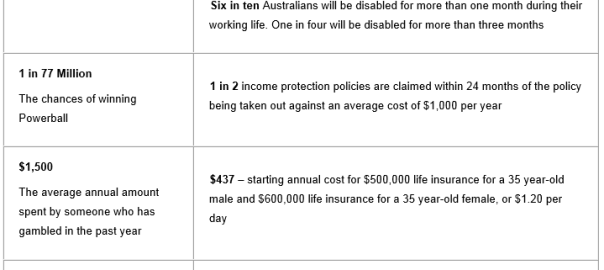Ever wondered what a franking credit is? Well…it’s not what you get when you do a favour for your mate named Frank. (ha ha get it?) Franking credits are a useful little tool to help pay less tax or even boost up your investment returns.
What are franking credits and how do they work?
Franking credits, also known as imputation credits, are essentially credits representing tax that a company has already paid (currently 30%) on its profits prior to a dividend being paid.
Basically franking credits stop double tax being paid on company profits as the tax paid by the company can then be passed to the shareholder. So for example, your XYZ share that you own pays a dividend of $1.00 per share after tax. This means that they have already paid the 30%, so this $1.00 is actually $1.43 with $0.43 per share paid in tax. When you come to do your taxes, you get a credit for the $0.43 per share already paid so if your tax rate is 32.5%, you only need to pay the remaining 2.5% on the $1.00 per share dividend received.
Franking credits in superannuation 
In superannuation (accumulation phase), the tax rate is 15%, compared to a company tax rate of 30%. The 15% difference in tax payable, can be refunded to your superannuation account and further enhance the return achieved from your share investments.
Example
Michael holds his super through a SMSF. He has an investment of 500 shares in ABC company which paid a dividend of $3.30 per share. This equates to a lump sum dividend payment of $1,650. With this comes $707 in franking credits (30%). As he is in accumulation phase and only paying 15% on income earnt within the fund, his SMSF is eligible to receive a refund of $353.50.
Franking credits in pension phase
The other good news is that when you are in pension phase and paying 0% tax, franking credits received by your super fund are fully refundable even without taxable income in your superannuation. This means that your super can claim back all the tax already paid by the distributing company from the ATO.
With either a superannuation or pension phase account, you need to understand the structure of your superannuation investments as bundled share purchases like through a pool super trust may not necessarily give you the same tax credits.
Example
Sally has reached age 65 and retired. She now has a pension account with a retail pension provider. Within her balance she holds 1,000 shares in XYZ company that paid a dividend of $8.70 per share. This equates to a lump sum dividend payment of $8,700. With that comes $$3,728 in franking credits (30%). As she is in pension phase and paying no tax, her pension fund is entitled to a refund of the full tax paid ($3,728) which would be repaid into the cash account of her fund and will help to cover ongoing pension payments.
Franking credits can be a great added extra in returns alongside growth and income to boost the overall return. They should most certainly be a consideration when developing an investment portfolio for your retirement funds. If you want to learn more about franking credits or direct shares, don’t hesitate to contact one of the team members at JBS.









 This is set to change on 1st January 2015 when new ‘deeming’ rules come into effect for account based pensions meaning they will be subject to the same ‘deeming’ rules that apply to financial investments. All new account based pensions will be deemed as earning a certain rate of income regardless of the actual return of the investment. The current deeming rates are as follows:
This is set to change on 1st January 2015 when new ‘deeming’ rules come into effect for account based pensions meaning they will be subject to the same ‘deeming’ rules that apply to financial investments. All new account based pensions will be deemed as earning a certain rate of income regardless of the actual return of the investment. The current deeming rates are as follows:


 Child Insurance can help you cover the extra financial burden of a serious illness, so you can do what ever it takes to get them healthy again.
Child Insurance can help you cover the extra financial burden of a serious illness, so you can do what ever it takes to get them healthy again.